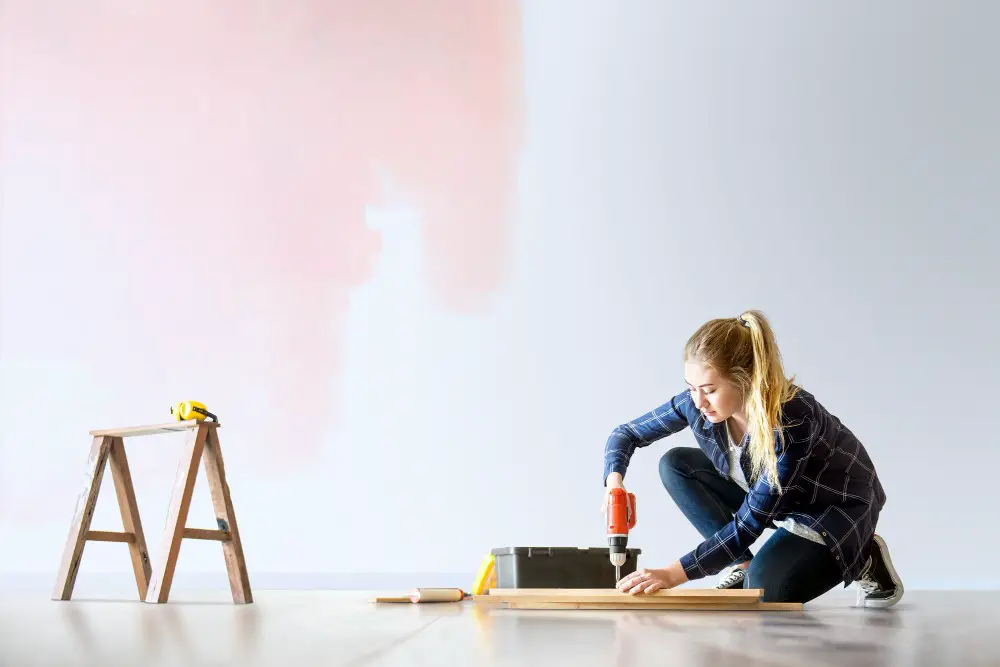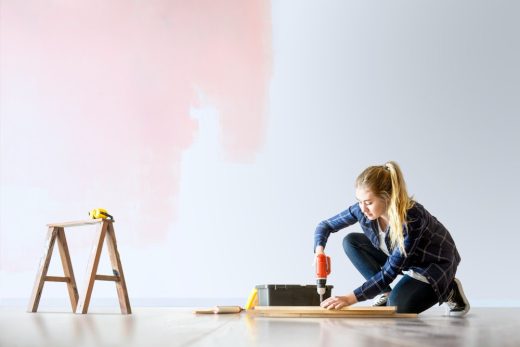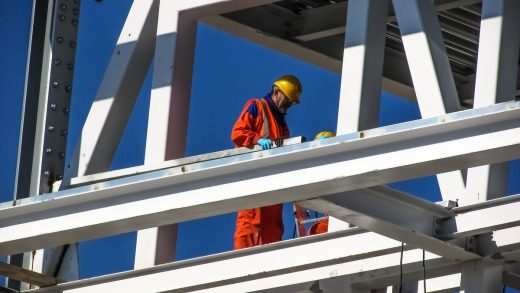Guide to staying safe when doing DIY work, Equipment and tool tips, Online building advice
Guide to Staying Safe When Doing DIY Work
February 16, 2022
Staying safe during DIY work is essential to your and others’ health and safety. From safety boots such as Buckbootz to protection goggles, there are many great ways to stay safe when doing DIY work around the house including having the right DIY tools. This short guide will look at some primary forms of staying secure during DIY work.
Wear Safety Boots
As mentioned above, wearing safety boots is a great way to stay safe, especially if you lift anything sharp-edged or heavy such as tools or furniture. Typically, safety shoes should be durable, slip-resistant, and, most importantly, have a safety toecap if something falls
onto your foot. Safety shoes tend to come with a lace boot style in various colour variations such as honey, brown, and black. We recommend choosing a size higher when it comes to safety boots in case you want to wear comfortable padded socks.
Wear Eye Protection
Wearing eye protection is a great way to ensure you don’t cause any severe or minor damage to your eyes. We’d recommend shopping for quality safety goggles that have polycarbonate lenses and are lightweight with scratch-resistant features. These elements ensure your safety and can be an excellent investment if you use the goggles for constant DIY work around your home.
If you scratch or damage your eye protection wear, we suggest replacing them with new ones, as the value to your health will be much more costly than skimping on safety equipment.
Wear Protective Gloves
Gloves come in many forms, but protective work gloves must be durable and have breathability whilst still letting you work on your next DIY construction job. When it comes to colour, we recommend wearing
hi-vis gloves so they stand out to you and others on the job or go for the
classic red and black mix. The gloves should also have a solid grip-ability to them, so you can handle any slippery tools, accessories or furniture –
especially when you are lifting.
If you’re dealing with any harmful elements such as adhesives or lead, we highly suggest throwing away the gloves and cleaning your hands with some wipes after the job is complete. Make sure not to leave the gloves around any home surfaces and if you do, clean them thoroughly, so no harmful elements pass on to your food, skin, or even pets.
Avoid Wearing Loose Clothing
Loose clothing such as jackets or bootcut jeans may seem fine to most for DIY, but in fact, can have a negative side when it comes to the work, primarily due to their loose-fitting nature that can get caught onto nails or tools, causing them to rip or even worse dragging you down from a dangerous height. It’s also recommended not to wear any jewellery such as rings, bracelets, or necklaces as they can also cause health and safety issues on the job.
Take Your Time
It’s essential to take your time with any DIY job, and there are a few good reasons why that is. Firstly, you’ll want to ensure that your job is finished to the best quality it can be, and this will likely require extra time and patience to get all the elements just right. More importantly, it’s also great to take your time because it ensures you’re not rushing and misplacing tools or accessories that can cause accidental damage to you or others around you.
Ventilate the Room
If you’re working inside your home, then it’s a good idea to ventilate your home by opening a window or keeping the door to the outside slightly open. This will help with airflow and also provide a safer environment if you’re using adhesives, glues or any other silicones that may impact your breathing.
Keep kids and pets out
Suppose you have any pets or kids, it’s paramount to keep them out of the room when proceeding with DIY work. From cabinet installations to building a custom dining room table, kids or pets shouldn’t get away or harm themselves in the process of doing any work. The solution to this problem would be to place them in another room, preferably with an adult who can overlook them and ensure they are kept safe and fed.
Do Not Work Alone
Whilst having the right equipment can be essential, it’s important not to work alone as you will likely need an extra pair of eyes to keep yourself safe during your project. Having a person with you also help if you have an accident in which you cause a severe injury and need to be taken down to the hospital.
Comments on this guide to staying safe when doing DIY work article are welcome.
Health and Safety
Safety Posts
Why Construction Safety Is Important
How to Increase Safety in Your Workplace
Electrical safety tips to protect your home
Best practices to improve construction site safety
Building Articles
Residential Architecture
Comments / photos for the Guide to staying safe when doing DIY work page welcome







